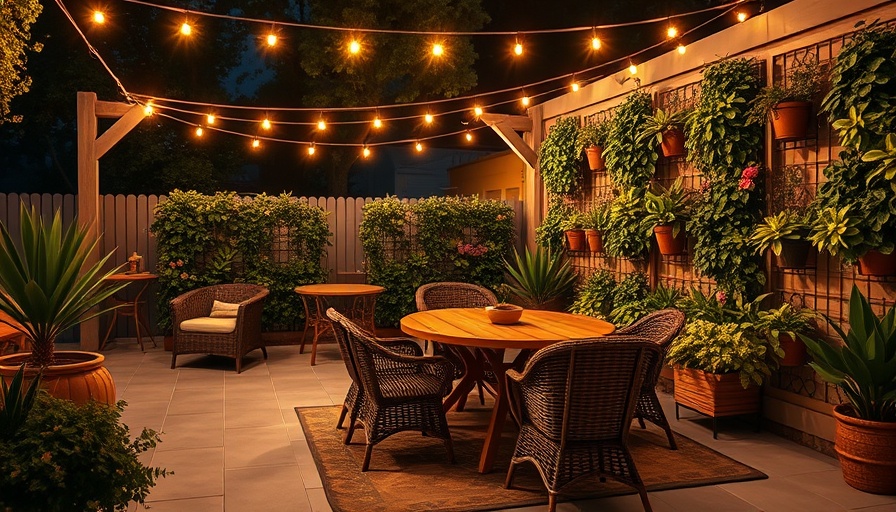
Transforming Your Outdoor Space for Year-Round Use
As winter sets in, many of us retreat indoors, turning off the world outside as we focus on cozy blankets and hot drinks. However, what if we told you that your outdoor space could easily become a functional hangout all year long? This idea is beautifully demonstrated in the recent video, Turning Your Garden Into A Winter Hangout!, where the hosts creatively transform an outdoor area into a comfortable winter retreat that can be enjoyed even when temperatures drop.
In Turning Your Garden Into A Winter Hangout!, the discussion dives into transforming outdoor spaces for year-round use, exploring key insights that sparked deeper analysis on our end.
Creating Cozy Corners: The Power of Enclosure
The essence of a winter hangout lies in its coziness. By creating smaller, contained spaces within your larger outdoor area, you can make it feel warmer and more inviting. The transformation depicted in the video involves building plant bookshelves acting as natural screens to encapsulate areas of the patio. This not only adds beauty but also helps retain heat. Constructing seating nooks, perhaps adorned with thick cushions and warm throws, invites friends and family to gather and enjoy the fresh air, even in colder weather.
Functional Features: The Importance of a Barbecue Setup
In the video, a barbecue area was built to serve as both a cooking space and a functional centerpiece of the outdoor room. By incorporating features that allow for cooking, like a well-designed barbecue, you’re not just enhancing outdoor aesthetics but also creating opportunities for gatherings around food. Such spaces celebrate the act of communal cooking, evoking warmth and joy similar to that found in indoor kitchens during the winter months.
Incorporating Plant Life: Greenery Makes a Difference
One of the main elements that stands out in the renovation is the use of plants. Integrating vertical gardens and flowering plants lends a sense of vibrancy and liveliness, no matter the season. A space filled with greenery acts as a natural air purifier and provides a soothing ambiance. The video highlights how potted plants can be placed to ensure they require minimal maintenance while still introducing gorgeous aesthetics to the space.
Lighting: Setting the Mood
Lighting plays a significant role in transforming any space, especially outdoor areas during winter. The video showcases the addition of café lights and pendant lighting, emphasizing how effective illumination can make your outdoor hangout warm and inviting. When planning your space, consider unique lighting techniques that can enhance the atmosphere, creating a perfect environment for winter gatherings.
Winter Comfort: Heating Solutions for Outdoor Spaces
To enjoy a winter hangout, adding heating options is paramount. The featured video introduces various heating solutions that merge functionality with style, ensuring the space remains warm during chilly evenings. Options can include outdoor fireplaces, patio heaters, or even well-insulated structures, allowing for comfort and relaxation despite the dropping temperatures.
A Call to Action: Embrace Your Outdoor Space This Winter
As you contemplate your outdoor areas, consider the advice from Turning Your Garden Into A Winter Hangout!. With thoughtful design and practical changes, your outdoor space can become the perfect winter retreat. So, gather your tools, sketches, and enthusiasm, and let your creativity flow to convert your garden into a winter haven suitable for gatherings and relaxation.
By embracing outdoor livability, you’ll not only enhance your home’s functionality but also enrich your life experiences surrounded by nature.
 Add Row
Add Row  Add
Add 




Write A Comment